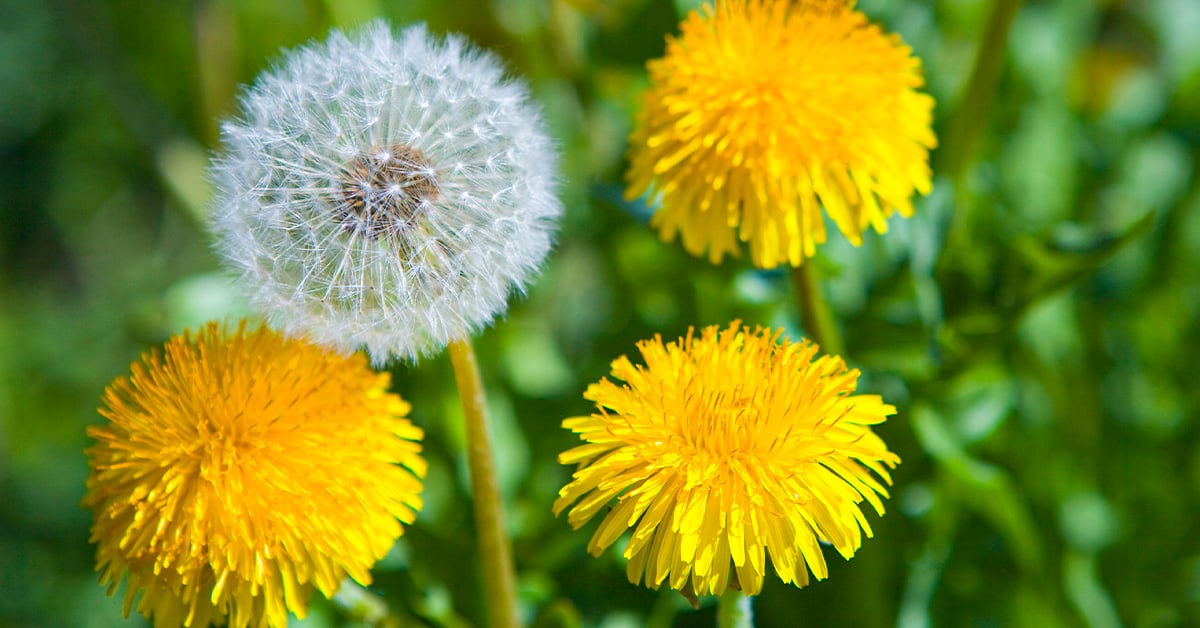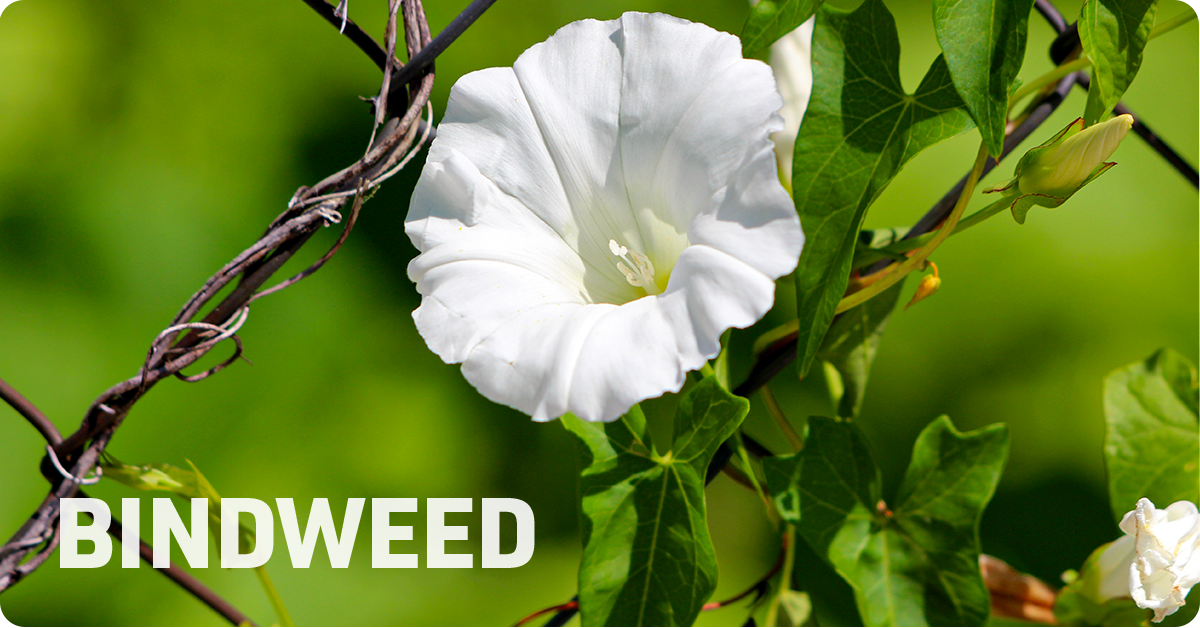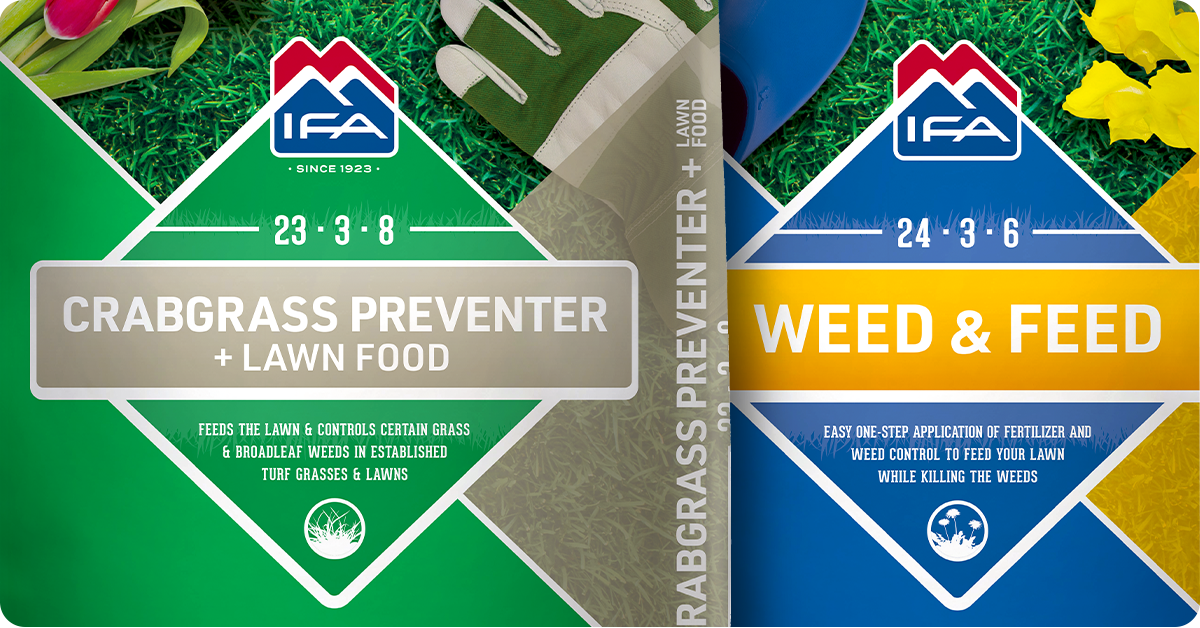
We’ve all seen those lush, immaculately-cared-for, emerald-green lawns that every homeowner strives for around the neighborhood. Effective watering, fertilization and consistent mowing are keys to their success, but there’s another important step in producing the perfect lawn—eliminating the weeds.
Weeds will inevitably invade your lawn and compete for sun, water and nutrients. If left unchecked, weeds will quickly spoil the image of your beautiful lawn. First, let’s look at different types of lawn weeds, the problems they present, and explore ways to defend your yard.
The Types of Weeds in Your Grass
Generally speaking, lawn weeds can be categorized as one of the following: broadleaf weeds or grassy weeds. As you may have guessed, broadleaf weeds tend to grow wider with broad leaves and a main vein. Grassy weeds are less easily identified, because they tend to blend in with your lawn. Whether your lawn has broadleaf weeds or grassy weeds, they are generally removed the same way.
Common Broadleaf Weeds
Let’s meet a few of our lawn enemies: bindweed, dandelions and other broadleaf weeds.
Broadleaf weeds may either be an annual or perennial plant, and can be easily identified because they don’t match your grass. They vary in appearance–including how they grow, root structure, stem shape, and height–and growth habitat.
Bindweed
Bindweed, commonly known as wild morning glory, is a creeping perennial weed with twisting stems up to six feet long, arrow-shaped leaves and funnel-shaped flowers that are white to pink. It grows in fields, pastures, gardens, road sides and other areas, blooming from June to September.

Additional broadleaf weeds common in our region, particularly in weaker areas of turf, include:
-
Chickweed
-
Clover
-
Dandelion
-
Knotweed
-
Spurge
-
Thistle
Weedy Grasses
Undesirable Weeds That Look Like Grass
Compared to broadleaf weeds, undesirable weedy grasses are more difficult to identify. They invade your lawn by closely resembling or sharing common characteristics with turf grasses. Once established, weedy grasses reduce the quality and appearance of your lawn.

Most lawns in our region consist of perennial Kentucky Bluegrass, which produce a smaller-bladed soft leaf. Undesirable grassy weeds generally grow in bunches, have a wide leaf, are lighter in color, or have stiff blades. Several common grassy weeds include:
-
Annual Bluegrass
-
Bentgrass
-
Bermudagrass
-
Crabgrass
-
Orchardgrass
-
Quackgrass
-
Tall Fescue
How to Get Rid of the Weeds in Your Lawn
When weeds and weedy grasses emerge, they’re determined to stay. Your method of weed control will depend on the type of weed, and in some cases, the time of year.
The very best defense for broadleaf weeds and grassy weeds is to prevent them from establishing. Take steps to ensure your lawn is thick, healthy and weed-free. Aerate your lawn in spring or fall, mow properly, maintain a consistent watering schedule, and feed your lawn with an annual fertilization program.
To prevent weeds and annual grasses before they start, apply a selective pre-emergent herbicide such as IFA Step 1 Crabgrass Preventer + Lawn Food in early spring. It controls many undesirable grasses and broadleaf weeds before germination, and feeds your lawn at the same time.

As we progress into spring, dandelions, chickweed and many other broadleaf weeds will start to appear. Apply IFA Step 2 Weed & Feed to eliminate these weeds after they’ve begun to grow. It also promotes thick turf and builds strong, deep roots; forcing out future weeds.
While IFA Step 2 Weed & Feed does remove already growing broadleaf weeds, it doesn’t control weedy grasses or prevent weed seeds sitting in your lawn from growing later. When these weeds pop up in your lawn, we recommend spraying them with Fertilome Weed Free Zone or Image All-In-One Lawn Weed Killer. Both are effective when controlling broadleaf weeds and weedy grasses without harming your beautiful turf.
IFA Lawn Weed Killer and Hi-Yield 2,4-D Amine may be used as well. In all cases, always make sure to read the label and follow all directions when spraying.
How Do I Control Lawn Weeds In Summer?
When summer comes, extreme temperatures and dry weather may stress your lawn. For this reason, many summer fertilizers–such as IFA Step 3 Spring & Summer Lawn Food–focus less on weed control and more on safe feeding and helping your lawn retain water.
When temperatures soar above 85 degrees, not all products perform well. The best product for eliminating unwanted weeds is Image All-In-One Lawn Weed Killer. It safely removes weeds in your lawn, while most weed control products may stress your lawn in high temperatures. Remember to read the label for when it can be applied for the best results and additional instructions.
Sadly, if perennial weedy grasses resist Image All-In-One Lawn Weed Killer, there isn’t much you can do except apply a controlled dose of Killzall. It will damage desirable grass as well, but you can patch the bare spot afterward by re-seeding or laying down sod.

The best time of day to spray weeds is in the early morning hours after the weeds have had all night to rest while letting their guard down and allowing their cells to open up and absorb more chemicals. A hot weed in dry soil is not going to die as easy as a growing weed in moist soil that is sprayed in the morning.
If not addressed, weeds can quickly take over your property. Our annual IFA 4Plus fertilizer program is formulated locally to meet the needs of lawns in the Intermountain West. It prevents and removes weeds and weedy grasses, builds strong roots, and grows a healthy, thick lawn you’ll love year after year.
Visit your local IFA Country Store to help identify weeds and undesirable weedy grasses. We’ll happily provide solutions, and help you grow the lush, weed-free lawn you desire.
Information for this article was provided by Aaron Jaussi, (Former) Branch Manager, Provo IFA Country Store; Nick Loveland, Certified Arborist, (Former) Assistant Manager, Ogden IFA Country Store; and Ken Holt, Lawn & Garden Category Manager, IFA Country Store.







